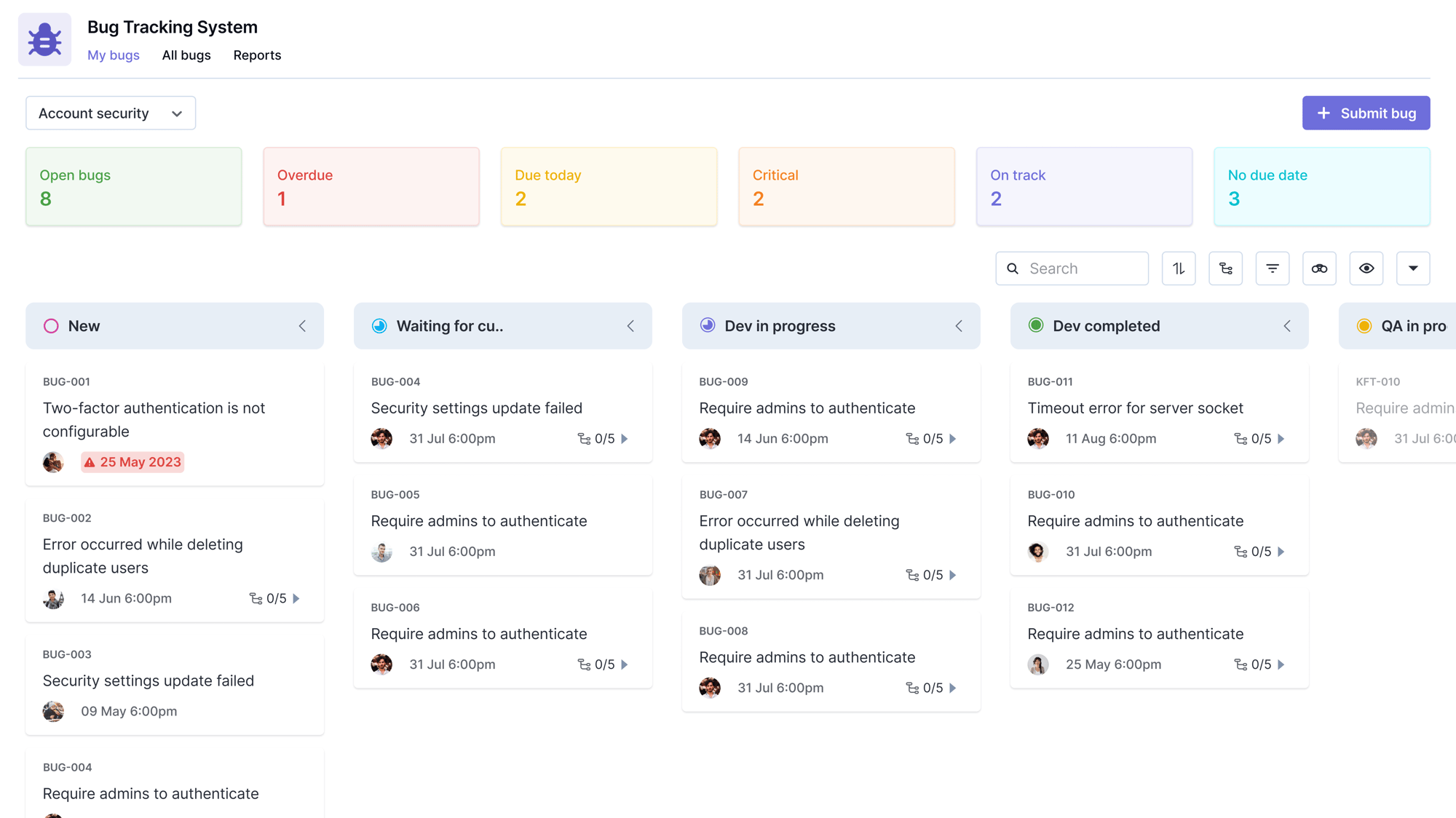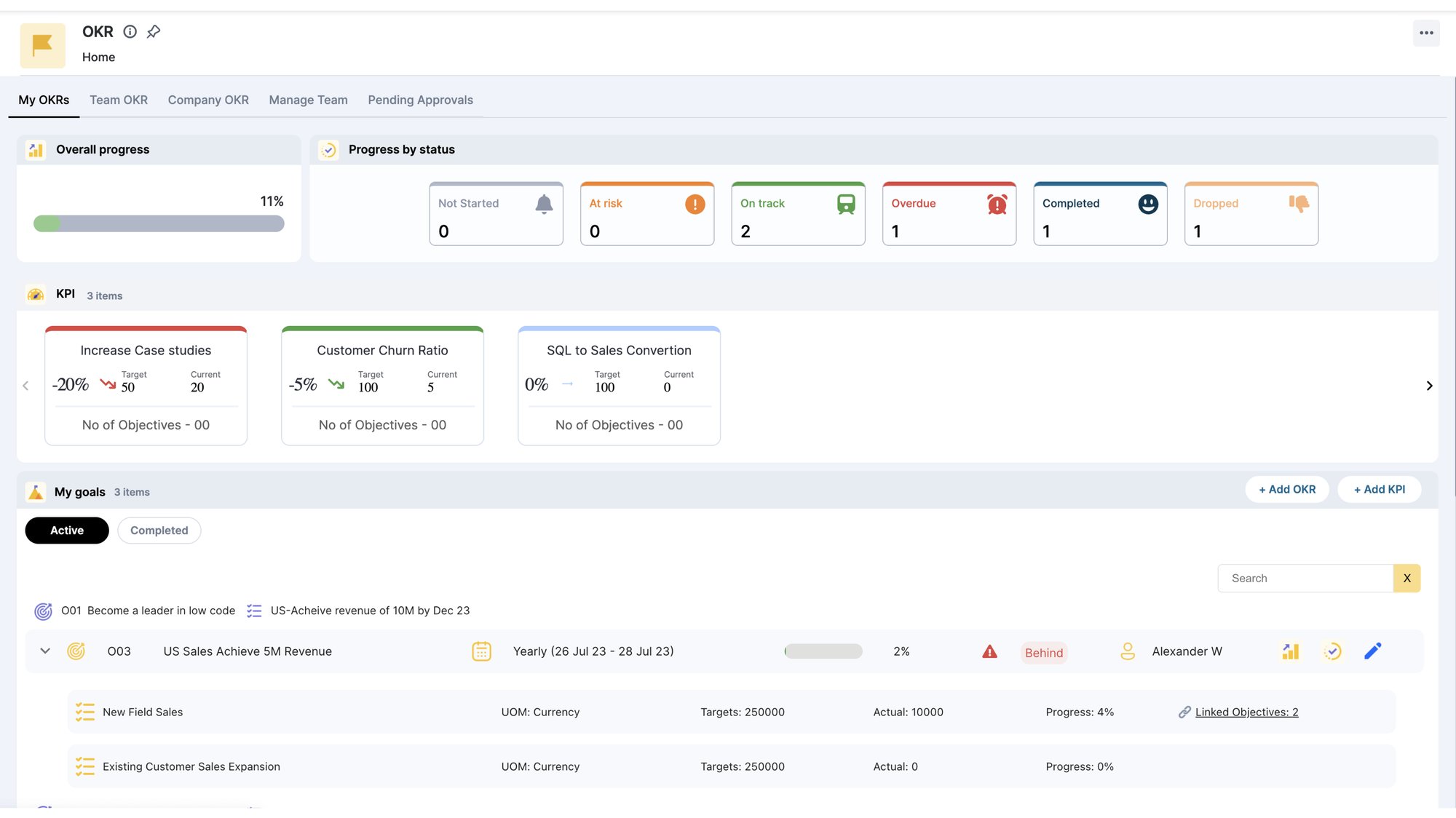Agile today stands as one of the most popular approaches to project management because of its flexibility and evolutionary nature. It started in 2001 with the Agile manifesto and was originally made for software development. Over time, agile project management evolved and became a popular choice for many project managers, irrespective of the industry.
Agile, in a nutshell, is an iterative and incremental approach to project management that helps teams keep up with the demands of the modern workplace. It consists of different methodologies and all of them are based on the concepts of flexibility, transparency, quality, and continuous improvement.
Schedule a personalized Kissflow Low-Code Platform Free Demo
Data from 2018 indicates that projects using Agile methodologies are 28% more successful and almost 71% of organizations use Agile with varying frequencies.
What makes Agile so successful and why are project managers solely relying on it or are using it in combination with other frameworks? The reason behind it is simple. The benefits of Agile makes the managers’ job easier and allows them to have greater control over their projects. What makes Agile project management truly unique is the fact that it focuses on both, delivering quality and value to the customer, and completing the project within the given project constraints.
Here are some top reasons and benefits of Agile and why it is adopted by top companies for managing their projects:
1. Superior quality product
In Agile project management, testing is an integrated part of the project execution phase which means that the overall quality of the final product is greater. The client remains involved in the development process and can ask for changes depending on the market realities. Since Agile is an iterative process, self-organizing teams keep on learning and growing with time and continue improving.
–> Thinking about how to manage your self-organizing teams? Here’s the list of productivity hacks to help you better manage remote work.
2. Customer satisfaction
In the Agile, the customer is always involved in the decision-making process which leads to greater customer retention. In the traditional framework, the customer is only involved in the planning phase and does not influence execution which affects the flexibility and adaptability. By keeping the customer in the loop and making changes according to their feedback, you deliver value to the customer and ensure that the final product is truly according to their requirements.
Another benefit of Agile Project Management is that the go-to-market time gets significantly reduced. This allows the product owner to successfully capitalize on the opportunity and in some cases, enjoy the first-mover advantage. It’s only natural that when customers get to enjoy these benefits because of your performance, they’ll come back to you for other projects.
Learn More About Kissflow’s Low-Code Platform and its benefits
See how Kissflow delivers the fastest time-to-value in the market
3. Better control
Agile allows managers to have better control over the project due to its transparency, feedback integration, and quality-control features. Quality is ensured throughout the implementation phase of the project and all stakeholders are involved in the process with daily progress reports through advanced reporting tools and techniques.
4. Improved project predictability
With increased visibility, predicting risks, and coming up with effective mitigation plans becomes easier. Within the Agile framework, there are greater ways to identify and predict risks and plan to ensure that the project runs smoothly.
Scrum methodology, for example, uses sprint backlogs and burndown charts to increase the visibility of the project which allows managers to predict performances and plan accordingly.
Here is our Customizable Marketing Templates to try for Free:
– Marketing Plan Template to Streamline your Marketing Efforts
5. Reduced risks
In theory, any project using an Agile methodology will never fail. Agile works in small sprints that focus on continuous delivery. There is always a small part that can be salvaged and used in the future even if a particular approach doesn’t go as planned.
6. Increased flexibility
When Agile is truly implemented in a project team, it empowers them with unparalleled flexibility. Teams work in smaller bursts and are supplemented by the constant feedback and involvement of the product owner. In other project management methodologies, changes usually are time-consuming and costly.
However, Agile divides the project in short sprints that are both manageable and flexible enough to allow the team to implement changes on short notice. This unmatched flexibility is one of the top reasons why dynamic organizations prefer to use Agile in their project.
7. Continuous improvement
Working on self-reflection and striving for continuous improvement is one of the 12 core principles of the Agile manifesto. The methodology works in iterations which means that each sprint will be better than the last one and previous mistakes will not be repeated. Agile methodologies foster an open culture of idea exchange and collaboration which allows team members to learn from shared experiences and improve together. if you're looking for Agile courses to help your team master Agile, check out these Agile certifications.
Tired of using Asana?
8. Improved team morale
As Agile teams are self-organized and self-managing, they have increased autonomy and authority over their decisions. The project manager shields the team from interference from sponsors and management.
The cross-functional nature of the teams also helps the members learn new project management skills and grow in their current roles. The team gets together frequently to discuss challenges and statuses letting them collaborate better. Since the team size is limited, Agile provides an environment where teams are close-knit and can have flexible team structures.
Learn more about project management challenges and how to overcome them.
9. More relevant metrics
The metrics used by Agile teams in estimating time and cost, measuring project performance are more accurate and relevant than the ones used in traditional methodologies. Agile emphasizes on producing results and optimizing performance while the metrics in Waterfall methodology show how closely the project is tracking against the estimated cost and time.
Agile produces important metrics like lead time, cycle time, and throughput that helps measure the team’s performance, identify bottlenecks and make data-driven decisions to correct them.
The Agile framework is a powerful tool that helps managers, team members, and clients. From improving the quality of the product to helping in the professional development of the team members, the benefits of Agile are numerous. It helps teams overcome pitfalls like excessive costs and scope creep.
If you think Agile is the right fit for your next project, you need to know the different tools used in Agile.
IT Leaders, Managers, and Teams play a crucial role in driving digital transformation. With Kissflow's low-code platform, you can eliminate IT backlogs and accelerate innovation Explore how Kissflow empowers IT teams.See Kissflow in Action
Worried about how to manage your growing list of projects?
We have built a FREE solution. Just for you.

.png?width=2000&name=admin%20dashboard%20(2).png)






